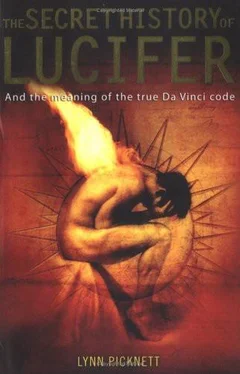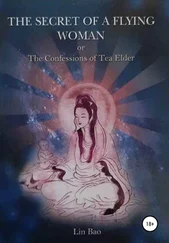Yet the contradictions multiplied. Even Herbert Thurston, the great conjuror and scourge of fake mediums (and contributor to Samri Frikell's classic sceptics' guide, Spirit Mediums Exposed) had to admit that table levitations in her presence: were not due to fraud and were not performed by the aid of her feet, knees or hands.' °°
Levitation is a particularly interesting phenomenon. Montague Summers fully believed that while saints reveal their holiness by rising unaided into thin air - the seventeenth-century monk Joseph of Cupertino, later canonized, regularly flew some distance, to the high altar or the tops of trees101 - anyone else who exhibited similar phenomena must be acting under Satanic power. However, this seems unlikely. Even Summers would have been most perplexed when, some years ago, there was a playground craze for levitation in which groups of schoolchildren would levitate one of their number using a simple, invented pseudo-magical ritual. There is no doubt that it works, and that real people have floated over the heads of their friends without benefit of special effects, trickery or even a safety net. The ability to flout even the law of gravity by just about anyone in the right frame of mind (whatever that might be) removes the phenomenon of levitation from the exclusivity of either the annals of the saints or the history of witches.
However, another of Eusapia Palladino's rare talents takes us back to the unpleasant aspects of physical mediumship, almost to necromancy.
Ingenious ectoplasm
Interestingly, Eusapia herself admitted that she sometimes cheated, explaining - perhaps ingeniously - that sceptics could will her to do so when she was in the highly susceptible state of deep trance. However, many of her admirers suggested that some of the accusations of cheating could be the result of an error - that as the 'ectoplasm' that exuded from her often took the shape of hands and feet, perhaps that is what her accusers saw moving suspiciously.
Ectoplasm was a greyish-white substance, often similar to mucus, that allegedly oozed from all the orifices of the entranced medium, like something that might be more successfully banished by penicillin than an exorcist. The ectoplasm would gradually take the shape of human faces or figures, which sitters often recognized as their deceased loved ones. However, the phenomenon appears to be a thing of the past: sceptics say it no longer appears in seances because fake mediums are afraid modem infra-red photography would reveal their grubby secrets to the world. The eminent astrophysicist and active psychical researcher, Glasgow's Professor Archie Roy, told me many years ago that when he managed to come close to some ectoplasm it `smelt like B.O.' By no means a sceptic, Professor Roy added, `Which wasn't surprising, because of where it was kept .. 1102
Most known ectoplasm turned out to be nothing more than lengths of cheesecloth, regurgitated, or expelled from other orifices, which says more for the mediums' powers of muscle control than for evidence of the afterlife. However, some photographs of alleged ectoplasm show some other kind of substance - unknown or at least unidentified - at work as a moving and growing hand or face. It seems quite horrible and proves nothing, certainly not the existence of an afterlife, but it could just as easily be paranormal as suspiciously normal.
In the case of Eusapia Palladino, her ectoplasm turned itself into useful rods and levers, known as `pseudopods', which were seen under conditions of infra-red photography, to raise objects and tilt tables. (And significantly, not even Herbert Thurston suggested that these were real rods and levers, somehow secreted about the medium's person.)
At many of Eusapia's seances, humanoid phantoms materialized, apparently created out of ectoplasm, and were seen and felt by investigators. Professor Morselli and fellow researchers witnessed an astonishing example of this on 1 March 1902 in Genoa. The professor examined the medium closely for smuggled aids, then tied her to a camp bed very thoroughly. She remained tied up although in `fairly good light' six ghostly figures appeared.
Professor Charles Richet, a world-renowned physiologist and Nobel Laureate joined in the general endorsement of her gifts, saying: `More than 30 very sceptical scientific men were convinced, after long testing, that there proceeded from her body material forms having the appearance of life.' 103 Dr Joseph Venzano would agree: at a seance he held on 16 June 1901, several ghostly hands materialized and stroked the dumbfounded sitters. Then the disembodied hands took hold of Venzano's:
When my hand, guided by another hand, and lifted upwards, met the materialized form, I had immediately the impression of touching a broad forehead, on the upper part of which was a quantity of rather long, thick, and very fine hair. Then, as my hand was gradually led upwards, it came in contact with a slightly aquiline nose, and, lower still, with moustaches and a chin with a peaked beard.
From the chin, the hand was then raised somewhat, until, coming in front of the open mouth, it was gently pushed forward, and my forefinger, still directed by the guiding hand, entered the cavity of the mouth, where it was caused to rub against the margin of the upper dental arch, which, towards the right extremity, was wanting in four molar teeth.104
The astounded Dr Venzano recognized the face he had just felt as that of a deceased relative. Unsure of which teeth the man had missing, he checked his dental records - and discovered they were four molars ...
However, it was only in Italy that Eusapia continued to be praised. After her exposure as a cheat in the US, her fate was sealed in the Anglo-Saxon world. She died in 1918, an enigma to the end, her apparent triumphs still debated today. But despite her cheating and the weirdness of her phenomena, Eusapia represented what may be seen as a typical Luciferan raft of miracle: always ambiguous, equivocal, perhaps shifting rapidly from positive to negative and back again. Professor Richet wrote tellingly:
... we are now dealing with observed facts which are nevertheless absurd; which are in contradiction with facts of daily observation; which are denied not by science only, but by the whole of humanity - facts which are rapid and fugitive, which take place in semi-darkness, and almost by surprise; with no proof except the testimony of our senses, which we know to be often fallible. After we have witnessed such facts, everything concurs to make us doubt them. Now, at the moment when these facts take place they seem to us certain, and we are willing to proclaim them openly; but when we return to ourself, when we feel the irresistible influence of our environment, when our friends all laugh at our credulity - then we are most disarmed, and we begin to doubt.105 May it not all have been an illusion? May I not have been grossly deceived? ... And then, as the moment of the experiment becomes more remote, that experiment which once seemed so conclusive gets to seem more and more uncertain, and we end by letting ourselves be persuaded that we have been the victims of a trick.106
It may be apt at this point to quote Dr Margaret Mead, who declared to the American Association for the Advancement of Science: `The whole history of scientific advancement is full of scientists investigating phenomena the Establishment did not believe were there.' 107
To dare to boldly go where man has never even considered being is the mark of the fearless Luciferan, seeker and maker, quester in both triumph and despair. And with the coming of the Enlightenment, a new kind of mage arose and courageously saluted God - but this time made in his own image.
CHAPTER SIX
Do What Thou Wilt
As the West crawled towards the Age of Enlightenment, when the likes of Locke, Voltaire, Newton and Hume's secular religion of rationalism began to draw hearts and minds on its often precarious journey away from the medieval mindset, a wave of both Luciferan invention and discovery and quasi-Satanic decadence was unleashed - although, as Colin Wilson points out, the eighteenth century boasted little actual magic.' It was as if, after all those years in the iron grip of the ecclesiastical authorities a dam had broken, and the energy released had to find its own level quickly, be it in the form of exciting new discoveries in chemistry or medicine, or the grim trappings of an orgiastic faux Black Mass. Yet the Dark Ages of clerical oppression were not over: the Inquisition still had the power to torture and kill, and `witches' were still being condemned by both the Catholic and Protestant ignorant - on both sides of the Atlantic.
Читать дальше












